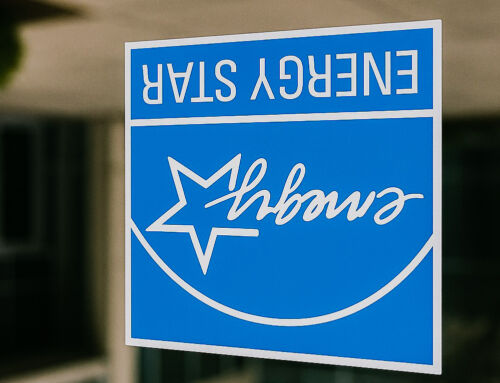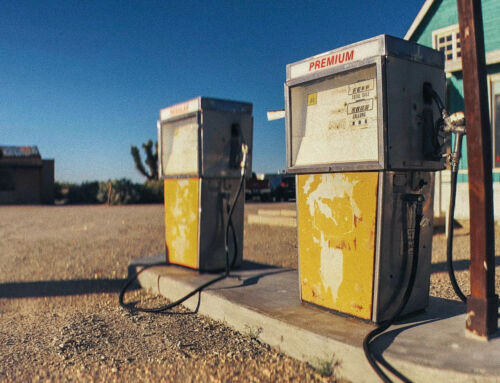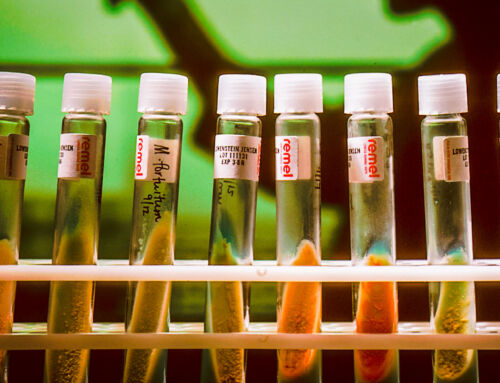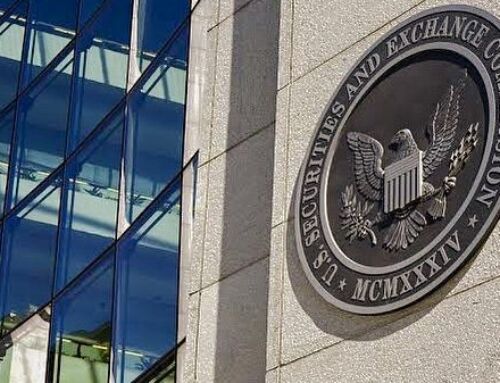View by Topic
Recent Articles
-
Energy Star: A Quiet Exit and a Bright Future Beyond GovernmentSaturday, June 7th, 2025
-
Congress Blocks California’s Gasoline Car BanSaturday, May 31st, 2025
-
EPA Will Keep Current Limits for “Forever Chemicals” in Drinking WaterSaturday, May 24th, 2025
-
Court Indefinitely Pauses SEC Climate Rule LitigationSaturday, May 17th, 2025
-
Maryland is About to Regulate Mold But is the Cart Before the HorseSaturday, May 10th, 2025
View by Month/Year
“Green Building Law Update” Headlines
Recent Articles & News from
Stuart Kaplow’s blog
at GreenBuildingLawUpdate.com
- Congress Blocks California’s Gasoline Car Ban: A Legal and Policy Analysis June 1, 2025
- EPA Will Keep Current Limits for “Forever Chemicals” in Drinking Water May 25, 2025
- Court Indefinitely Pauses SEC Climate Rule Litigation May 18, 2025
- Maryland is About to Regulate Mold: But is the Cart Before the Horse? May 11, 2025
Subscribe to the Green Building Law Update!
Stuart Kaplow brings his expertise and extensive experience to the table with his unique digital publication, "Green Building Law Update". Subscribers receive regular updates to keep them informed about important issues surrounding Environmental Law, Green Building & Real Estate Law, as well as the emerging demand for Environmental Social Governance (ESG).
Get fresh content through the lense of Stuart Kaplow's cutting-edge expertise, innovative commentary and insider perspective. Don't miss another issue! Subscribe below.
Green Building Costs Less Than Conventional Building
A green building costs less than a conventional building. Despite public perception to the contrary, today here is no statistically significant difference in construction cost between LEED® and non LEED building. And the LEED building will have energy cost savings, on average, of more than 33% compared with the non LEED building.
The green building market has matured such that we can today, state with certainty the hard data on performance proves that when first costs of green building are considered with direct energy savings, a green building costs less than a conventional building.
The Newest Building Cost Data
The U.S. military was not only an early innovator in green building but today has more square feet of green building than anyone. The U.S. Air Force has required that all construction be capable of LEED Silver certification since 2007. With more green real property assets than any other branch, Gene Mesick, head of the U.S. Air Force Center for Engineering and the Environment made clear in a speech at a Federal Summit on May 18, 2010, “there are zero additional costs for LEED Silver construction.”
Only weeks before that speech, Greg Kats published his 2010 study based on extensive financial analysis and sophisticated modeling that many consider to be among the largest and most authoritative studies on the cost of green building,“Greening Our Built World”, which found among the 170 U.S. buildings that made up the data set, the median cost increase for building green was 1.4%. “More than three-quarters of the buildings in the data set have green premiums between 0% and 4%; the largest concentration (69 buildings) is between 0% and 1%.” This roughly translates into a cost premium of about $3 per square foot.
Equally compelling is that when Kats asked how much energy green buildings use compared with non green buildings, he found a median direct energy cost reduction of 34%. Before considering annual utility cost increases, the present value of a decade of energy savings (not to mention other operating costs savings), it is clear that minimal additional first costs of building green, if any, are quickly recaptured through energy cost savings.
Energy cost savings and synergies among the several LEED energy and atmosphere credits were topics discussed by Bob Andrews at an April 13, 2010 seminar, “The Cost of LEED”. Andrews describes a LEED office building where daylighting reduces the need for lighting such that reducing lighting reduces electricity used for lighting, and also reduces the heat outputs from lights, which reduced heat output reduces the HVAC loads further reducing electric usage. It may be an oversimplification, but high light transmittance with low U-value and low SHGF allows light in, while reducing solar heat gain; so spending some first dollars on good large windows can be key to other first cost reductions and energy cost savings in many projects.
Examples of Green Building Costs
Anecdotally, a 5 story office building in suburban Maryland pursuing LEED Silver certification, delivered in 2nd quarter 2010, cost $154 per square foot compared to the $155 per square foot budget when the building was first designed non green.
Also anecdotally, in April, 2010 the lobby public education display was updated at the Mission Street, San Francisco Federal Building, designed in 2002 to meet then GSA requirements for sustainable buildings, LEED Silver certified and constructed at the same first costs, occupied in 2007, and today consumes one-third the energy of a typical California office building, with actual utility bill savings of more than $500,000 a year.
Further anecdotal evidence comes in a widely quoted January 14, 2010 interview in The New York Times, when Jonathan F. P. Rose, one the larger sustainable developers in the nation, managing $1.5 billion of work, reported, “we spend about 1% more to make a building between LEED silver and gold .. we typically reduce energy use by about 30%”.
Platinum Cost No More
The several new studies surprisingly observe that in most instances the first costs of new construction of a LEED Gold building are no more than a Silver or Certified buildings. In fact, more LEED Platinum buildings across the studies had little or no first cost premium (0% to 2%) for building green, than had a larger premium. Moreover, there is a resultant energy savings increase with the number of green elements, with the USGBC reporting that more than half of Platinum buildings have actual energy cost savings of more than 50%. Early programming for green elements and the knowledge and experience of the project team, including having a skilled green owner’s representative on the team early, impact the cost of green building more than the level of greenness.
Major Cost Studies
This new 2010 information on first costs and energy cost saving is buttressed by earlier studies.
In a Fall 2009 study by the Urban Green Council “The Cost of Green in NYC” that gathered data from 107 recent projects in New York City, of which 63 were pursuing LEED certification, LEED certified projects cost $440 per square foot compared with $436 per square foot for non LEED. The cost differential of less than 1% is not statistically significant.
That same study found on commercial interiors projects, the cost of $191 per square foot for LEED CI construction was actually 6% lower than the $204 per square foot for non LEED.
The study further quantified that “soft costs associated with LEED certification were not substantial in terms of overall project costs.” The median cost of LEED design fees was $0.56 per square foot and the median cost of LEED documentation was $0.30 per square foot.
While the soft costs associated with LEED certification are generally not substantial in terms of overall project costs, there are costs. The most direct cost is the registration and certification fees paid to the Green Building Certification Institute, that are roughly 3¢ to 5¢ per square foot. There is the time and effort in compiling and submitting the LEED documentation and generally managing that process. And arguably LEED introduces requirements that add costs if they were not already part of an owners program, the most obvious of which is commissioning which can easily cost $0.50 to $1.00 per square foot. But most LEED credits have no actual additional costs, including confirming a project locating near mass transit to achieve an alternative transportation credit.
A May 2009 study, “High Performance Green Building What Is It Worth?” by Cushman & Wakefield, provided a detailed LEED credit by credit review of a mixed use new construction project in Seattle and concluded, the dollars expended “do not reflect a premium for strategies, components, or construction costs specifically attributed to high performance green elements.”
In what may be the most widely referred to study of 221 buildings in 2007 of which 83 were pursuing LEED certification, a study built on the work undertaken in the earlier “Costing Green: A Comprehensive Cost Database and Budget Methodology” (released in 2004), Davis Langdon’s concluded, “there is no significant difference in average costs for green buildings as compared to non-green buildings.”
Higher Effective Rent
To further offset even nominal increased first cost, “buildings with LEED certification or the government’s Energy Star label averaged higher occupancy levels, lease rates and sales prices than non green buildings.” This conclusion by the Burnham-Moores Center for Real Estate, University of San Diego, “Do Green Building Make Dollars and Sense” 2008 study is now broadly supported by other studies.
A study released in November 2009, conducted by that same university in conjunction with CB Richard Ellis showed “green buildings have 3.5% lower vacancy rates and 13% higher rental rates than the market.” (That ‘effective’ rental rate is extrapolated from the faster absorption rate, but does not include the benefits of tax credits and other government incentives.)
According to a 2008 CoStar Group study considering over 1,300 green buildings (representing about 351 million square feet of the roughly 44 billion square feet in the CoStar database), LEED buildings commanded effective rental rate premiums of $11.33 per square foot over non LEED buildings, with LEED buildings having 4.1% higher occupancy than non-LEED buildings. LEED buildings commanded a remarkable $171 more per square foot sale price (i.e., $438 per square foot for LEED rated buildings, versus $267 per square foot for non-LEED buildings).
More benefits
All of this discussion of first dollar costs and direct energy cost reductions, does not begin to touch on the other very real benefits of green building. The USGBC reports that across its portfolio, green buildings: consume 26% less potable water, account for 33% fewer greenhouse gas emission, require 13% lower maintenance costs, yield 27% higher occupant satisfaction, and much more ..
Conclusion
It makes no sense to construct a building or retrofit a building, today, that is not a green building.
We can state with certainty that a green building costs less than a conventional building.
The hard data, as described above makes clear the knowledge and experience of the project team, including having a skilled green building owner’s representative on the team early, impact the cost of green building more than the level of greenness and more than specific green elements.
We work with a broad breadth of businesses, including assisting as an owner’s representative in a green building or sustainable business project; much of that work being done by ajhon Sustainable Systems Integrator, a non-legal affiliate of our law firm. If we can assist your company, including working with your in house counsel and outside consultants on your project team, please contact Stuart Kaplow.









